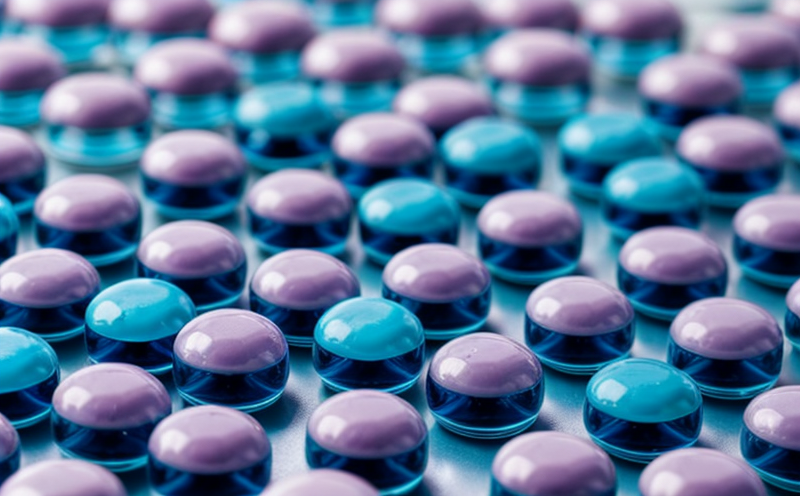ASTM E2694 ATP Bioluminescence Testing in Pharma Labs
The ASTM standard ASTM E2694 outlines a method for using adenosine triphosphate (ATP) bioluminescence testing to assess the presence of viable microorganisms on surfaces. This technique is widely recognized as an efficient way to monitor cleanliness, especially in pharmaceutical environments where even trace amounts of contaminants can impact product integrity and patient safety.
The ATP test measures the amount of ATP present on a surface by breaking down the compound into its components, including adenosine monophosphate (AMP). The AMP then reacts with luciferin and luciferase to produce light. The intensity of this light is proportional to the quantity of ATP detected, which in turn corresponds to the level of microbial contamination.
This method is particularly advantageous for pharmaceutical labs due to its speed and sensitivity. It can detect as little as 102 cfu/cm² (colony-forming units per square centimeter) of viable bacteria or fungi, making it highly effective in ensuring that surfaces meet stringent cleanliness standards.
The ATP bioluminescence test is non-destructive and provides results within minutes. This rapid turnaround time allows for immediate corrective actions to be taken if contamination levels exceed acceptable thresholds. In contrast, traditional microbiological tests can take several days to complete, during which time additional contaminants may accumulate on the surface in question.
Another significant benefit of this method is its versatility. It can be used across various surfaces such as countertops, equipment, packaging materials, and even personnel. This broad applicability ensures a comprehensive assessment of potential contamination risks throughout the entire production facility.
The ASTM E2694 ATP bioluminescence testing also supports continuous monitoring programs that help maintain consistent quality standards over time. By integrating regular ATP tests into their routine cleaning protocols, pharmaceutical companies can identify trends in microbial presence and address any recurring issues promptly. This proactive approach not only enhances overall product safety but also reduces the likelihood of costly recalls or regulatory actions.
For optimal performance, it is crucial to follow proper sampling techniques when conducting these tests. Proper surface preparation involves removing all visible dirt and debris before swabbing or wiping the area with an appropriate solvent such as ethanol or water. Additionally, ensuring that samples are collected promptly after cleaning helps maintain accurate readings since ATP can degrade over time.
Instrumentation plays a critical role in achieving reliable results from ATP bioluminescence tests. High-quality luminometers equipped with advanced software features enable precise measurements and easy data interpretation. These devices typically include built-in calibration tools, automated sample handling systems, and user-friendly interfaces that simplify operation even for non-specialists.
In summary, ASTM E2694 ATP bioluminescence testing offers pharmaceutical labs a robust tool for ensuring surface cleanliness meets stringent industry standards. Its combination of speed, sensitivity, versatility, and ease-of-use makes it an indispensable part of any quality management system aimed at safeguarding both product integrity and public health.
Scope and Methodology
| Step | Description |
|---|---|
| Preparation | Clean the surface thoroughly using an appropriate solvent. Remove any visible dirt or debris before sampling. |
| Sampling | Use a swab or wipe to collect samples from designated areas of interest. Ensure proper contact time between the swab and the surface as specified by the instrument manufacturer. |
| Luminescence Measurement | Apply the ATP reagent directly onto the sampled area, allowing it to react with the luciferin-luciferase mixture. Measure the emitted light using a luminometer calibrated according to ASTM E2694 guidelines. |
| Data Interpretation | Analyze the luminescence data against established thresholds for acceptable microbial contamination levels based on the specific application requirements. |
The scope of ASTM E2694 ATP bioluminescence testing extends beyond mere surface cleanliness checks; it encompasses a broader framework designed to ensure that all relevant factors affecting microbial presence are considered. This includes environmental conditions such as humidity and temperature, personnel hygiene practices, and equipment maintenance schedules.
By incorporating these elements into the overall assessment process, pharmaceutical labs can better understand how various internal variables interact with external contamination sources. Such insights enable more informed decisions regarding corrective actions needed to achieve and maintain desired cleanliness levels.
Eurolab Advantages
At Eurolab, we specialize in providing high-quality ASTM E2694 ATP bioluminescence testing services tailored specifically for pharmaceutical labs. Our dedicated team of experts ensures that every aspect of the testing process adheres strictly to international standards.
- Expertise: Leveraging years of experience and specialized knowledge, our technicians possess the skills necessary to conduct accurate and consistent tests across diverse applications.
- Equipment: Equipped with state-of-the-art luminometers from leading manufacturers, we offer precise measurement capabilities that meet or exceed industry expectations.
- Support: Our comprehensive support services extend beyond just conducting the tests themselves. We also provide detailed guidance on best practices for sampling and interpreting results to help labs optimize their cleaning procedures.
The combination of our technical prowess, advanced equipment, and unwavering commitment to quality makes Eurolab your ideal partner for ASTM E2694 ATP bioluminescence testing in pharmaceutical environments.
Quality and Reliability Assurance
Our laboratory adheres strictly to ASTM E2694 standards throughout all phases of testing, from sample collection to final analysis.
We maintain strict quality controls through regular internal audits and external validations conducted by independent third parties.
In addition to these formal measures, Eurolab places a strong emphasis on continuous improvement. This includes staying abreast of the latest advancements in ATP bioluminescence technology and incorporating them into our service offerings whenever appropriate.





